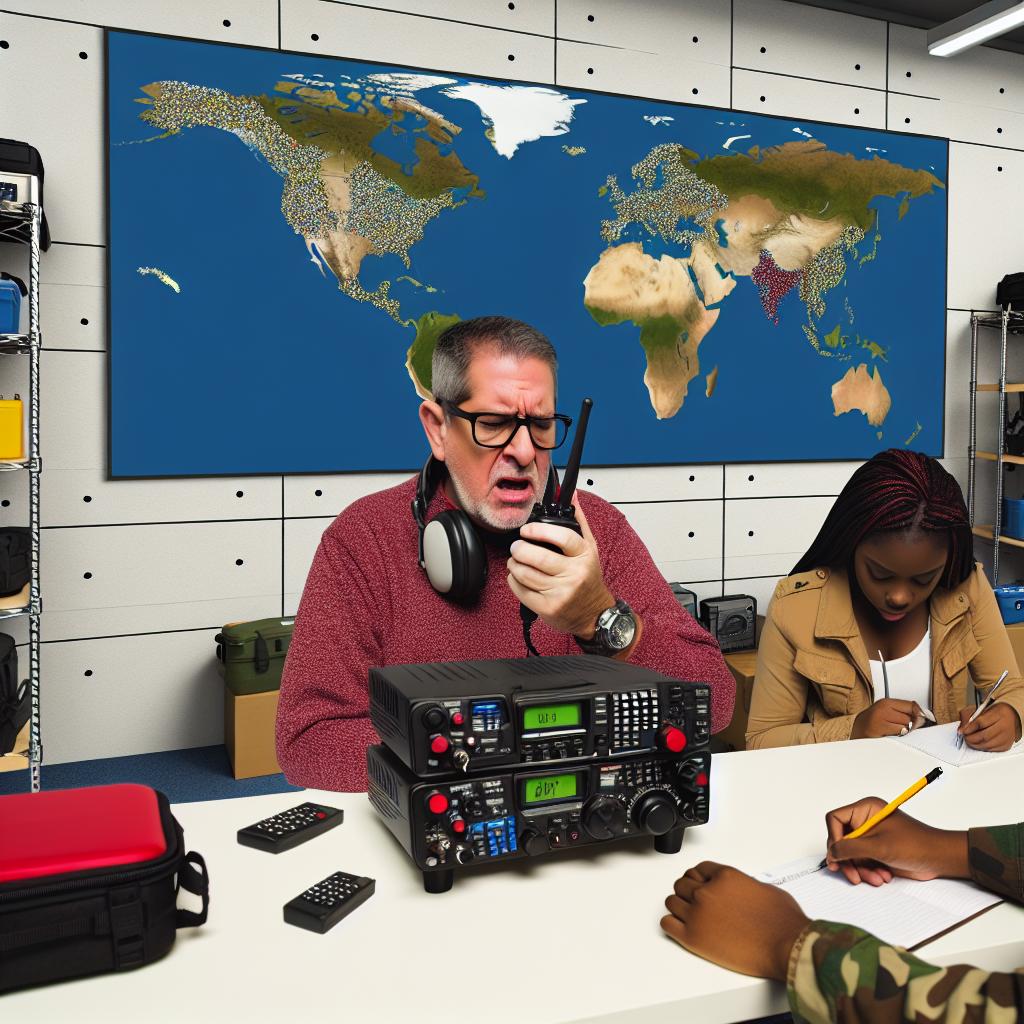Introduction to Repeaters in VHF/UHF Communications
In the realm of radio communications, repeaters are indispensable, especially within the VHF (Very High Frequency) and UHF (Ultra High Frequency) bands. These devices are pivotal in extending the range of communication, ensuring reliable transmission, and overcoming physical obstructions. By understanding their mechanisms and applications, stakeholders can leverage repeaters to optimize communication networks.
What is a Repeater?
Fundamentally, a repeater is an electronic device designed to enhance radio communication capabilities by retransmitting signals it receives. It captures a signal on a specific frequency and amplifies it before retransmitting on a separate, often higher, frequency. This process enables signals to travel further distances than would be possible through direct transmission alone, overcoming barriers such as mountains, buildings, and dense vegetation. Positioned strategically, repeaters are often found on high altitudes—be it on hilltops, tall buildings, or towers—to optimize coverage radius and effectiveness.
Components of a Repeater
A conventional repeater setup is comprised of several essential components that function collectively to ensure seamless signal transmission and reception:
Receiver: The receiver is tasked with capturing incoming signals from communication devices, ensuring that the repeater can reinforce and retransmit them effectively.
Transmitter: After a signal is received and processed, the transmitter broadcasts the amplified signal on a different frequency. This frequency change is critical to avoid feedback loops and maintain communication clarity.
Duplexer: Operating as a signal manager, the duplexer separates incoming and outgoing signals, allowing simultaneous transmission and reception without interference.
Controller: This component acts as the brain of the repeater system, monitoring its operations and managing functions such as signal processing, control commands, and error checking.
Antenna: The antenna serves both roles: facilitating the reception of incoming signals and broadcasting outgoing signals, maximizing the repeater’s coverage area.
Frequency Offset
A defining feature of VHF/UHF repeaters is the concept of frequency offset. This involves shifting the frequency of the incoming signal slightly before retransmitting, thus preventing the interference that would occur if the same frequency were used simultaneously for reception and transmission. For example, in the VHF band, a typical offset is 600 kHz, while in the UHF band, a 5 MHz offset is common. This frequency separation is crucial in maintaining communication integrity and preventing self-interference.
Accessing a Repeater
Users wishing to access a repeater must ensure their radio equipment is programmed correctly with the appropriate frequency and offset. Some repeaters incorporate security measures, including the requirement of a specific sub-audible tone. Known as a subtone or CTCSS (Continuous Tone-Coded Squelch System), this sub-audible tone activates the repeater, granting users access while preventing unauthorized entry. The inclusion of this tone reduces interference from adjacent repeaters that might be operating on the same frequency range.
Applications of Repeaters
Repeaters find utility across various sectors and applications by enhancing communication reach and reliability:
Public Safety Communications: In environments where seamless communication is imperative, such as with police, fire, and emergency medical services, repeaters ensure that personnel can communicate effectively over long distances and challenging terrains.
Amateur Radio: For amateur radio enthusiasts, repeaters are vital in extending communication capability, allowing operators to connect over considerable distances—sometimes globally—stimulating hobbyist activities and fostering community connections.
Commercial and Business Use: Industries such as construction, transportation, and utilities depend on dependable communication networks, facilitated by repeaters to coordinate operations, improve productivity, and enhance safety in business environments.
Challenges and Maintenance
Despite their advantages, repeaters come with their own set of challenges. Routine maintenance and diligent monitoring are necessary to ensure they function at optimal levels. Environmental conditions, like severe weather, can lead to physical damage of repeater systems, creating a need for regular inspections and maintenance routines to prevent service disruptions. Hardware malfunctions could lead to downtime, requiring quick diagnostics and repairs. Power supply interruptions are another potential challenge, reinforcing the need for backup systems and regular maintenance. Therefore, organizations operating repeaters often have teams dedicated to the upkeep and troubleshooting of these critical devices.
Conclusion
Understanding the role and operation of repeaters in VHF/UHF communications is crucial for anyone involved in radio communication. For professionals in public safety, amateur radio enthusiasts, and communications specialists, repeaters are invaluable tools that assist in overcoming geographical challenges and improving the reliability of communication networks. By leveraging the capabilities of repeaters, users can significantly enhance their communication systems’ effectiveness, ensuring messages are conveyed clearly and reliably across distances and obstacles. As communication needs continue to grow, the role of repeaters in providing expansive network coverage will become increasingly significant, further cementing their importance in modern communication landscapes.

